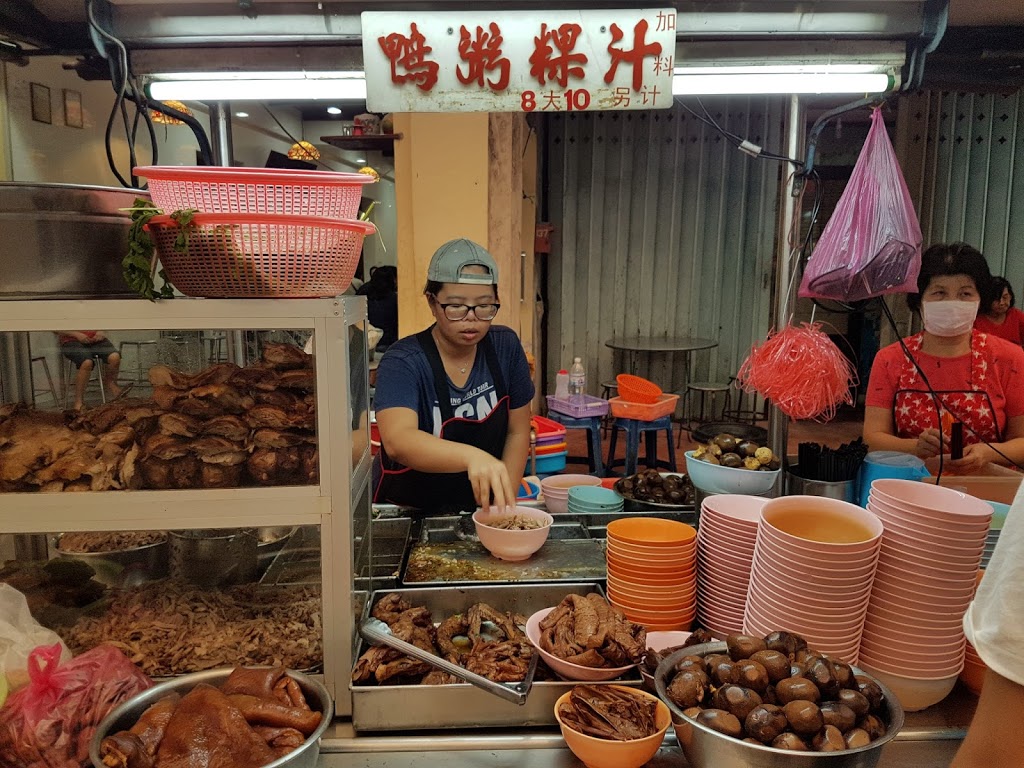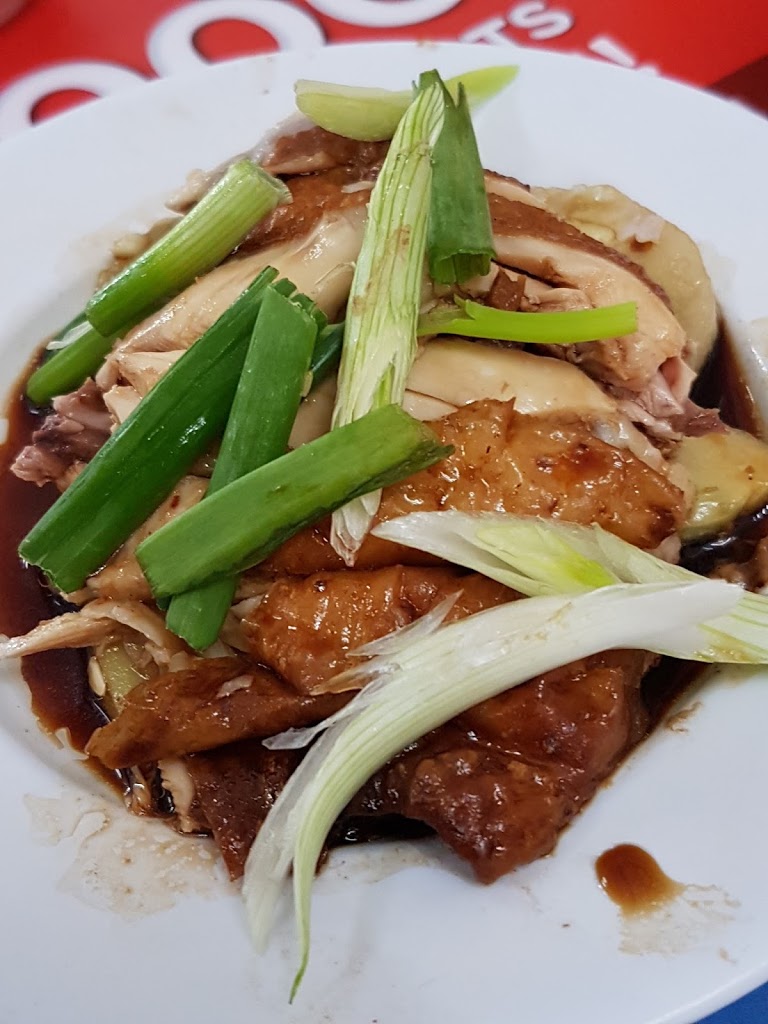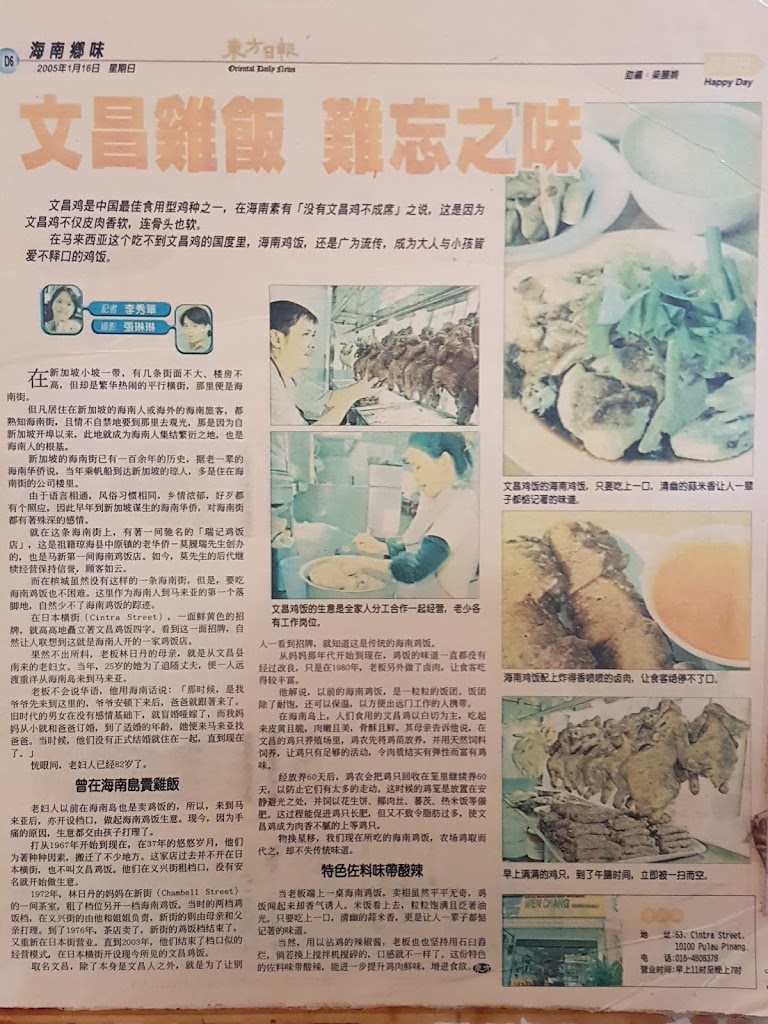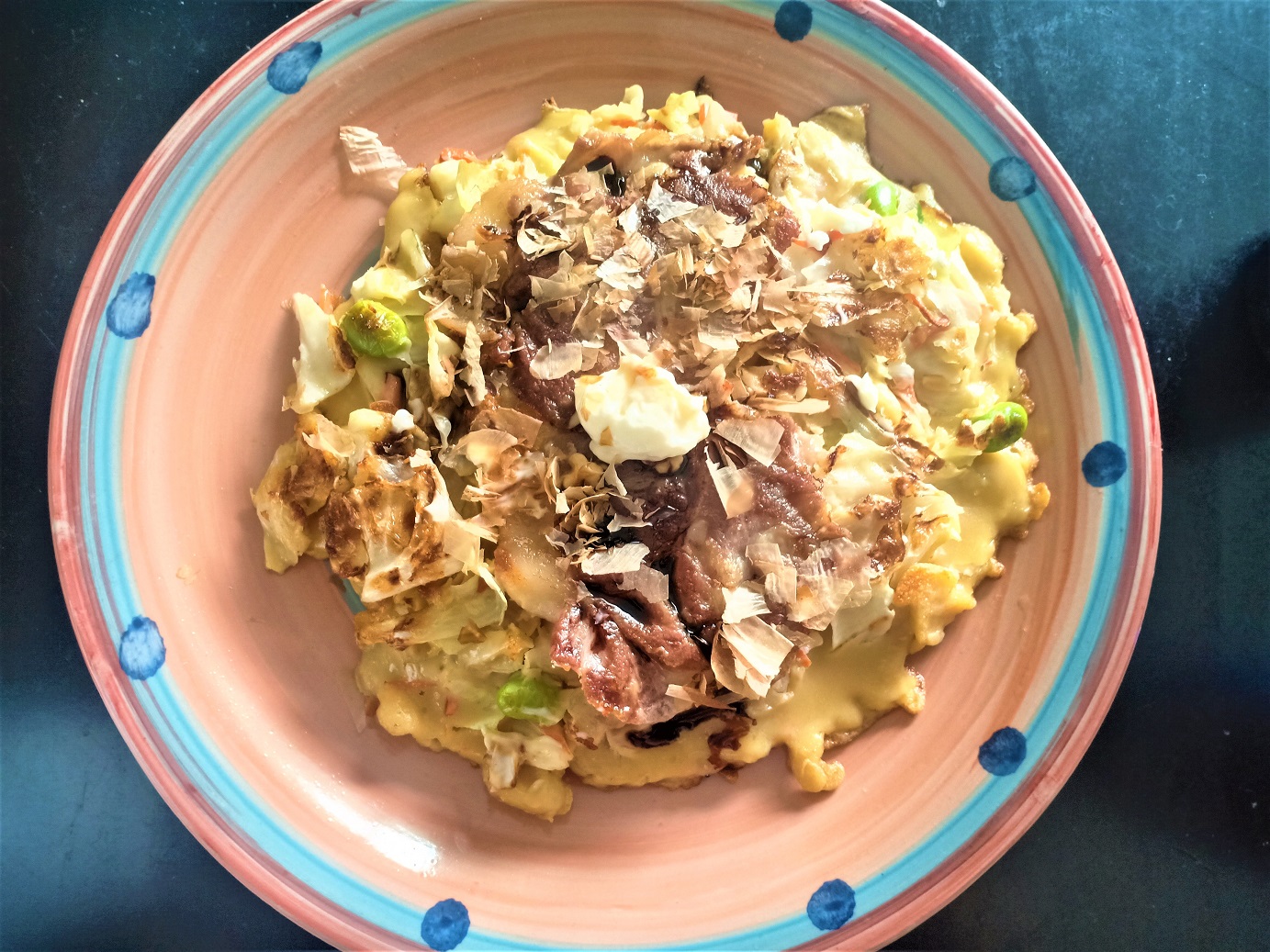I’ve recently written an updated entry on Penang street food (2002), here’s the link:
https://foodieadie.com/revisiting-penang-with-a-vengeance-penang-ultimate-food-guide-2022/
I’m a true-blue, die-hard foodie. On a shitty day, nothing but good food would cheer my soul up. So, of course when I had the chance to return to Penang aka the food paradise, I wouldn’t miss any chances!
Touted as one of the top 5 food destinations in the world, Penang’s food scene hardly disappoints. Walking down the old Georgetown streets, which was listed as a UNESCO World Cultural Heritage Site, one would quickly spot many other tourists walking around with their smartphones and maps looking and hunting for the next place to dine at. Unsurprisingly, given its reputation as a food heaven, many foodies from the all over the world flock to Penang to have a taste of what Malaysia’s best has to offer. What I find interesting is that most vendors manning a stall in an old-style Chinese coffee shops (which also serves as hawker centres housing a few food stalls at the same time) only sell very few dishes, often only one dish, in which they have spent years perfecting the recipes and improvising their skills; it’s no wonder Penang’s street food is hard to beat!
Below is a compilation of the food that I’ve tried in Penang:
1) Restoran Kimberly – Duck Kuey Chap at Lebuh Kimberly (汕头街权记鸭粥粿汁专卖店)
I came to know what Kuey Chap is from a food TV show many years ago, but have not had the chance to try it out myself. So, just imagine my euphoria and excitement when I chanced upon this famous stall known for its duck kuey chap on a random stroll outside my hotel (which happened to be in the vicinity of Kimberly Street where all the food action takes place). To those who are unfamiliar with the dish, Kuey Chap is a traditional Chinese, Teochew specifically, noodle soup consisting of flat wide rice noodles cut into small squares or triangles, served in a meat broth. And this stall at Kimberly Street serves their own version of Kuey Chap, which I heard is one of its kind, as Kuey Chap is usually served with pork.
So, I immediately dragged my parents to the stall and told them “I saw this stall from a TV food show, it is a must-try!”. When you are at the stall to get your orders down, you basically just tell the staff whether you want it big (RM10) or small (RM8) and whether you want it with Kuey Chap (rolled rice noodle) or with rice. As I’m always gamed to try new foods, I quickly decided on Kuey Chap.
The bowl of noodles came with a generous amount of duck meat and pig innards and its signature rich, aromatic dark broth. Of special note, I personally think the broth was exceptional, bursting with wondrous flavours of duck and pork, braised over slow fire for long hours, as well as other spices like peppercorn, star anise, cinnamon, etc; it was marriage of all sorts of flavours, the sweet, the salty, the spice all combined wonderfully with every bite, peppered with the occasional bits of deep fried pork lard which added an extra crunch and aroma to it. One of the star ingredients of this dish is the braised pig intestines which were amazingly flavourful and delicious; slow cooked to perfection for hours until they were soft and tender, these intestines were bursting with flavours and aromatic juices from the broth as you bite into them.
Ho-chiak/Yummylicious rating: 9/10
2) Penang Road Famous Teochew Chendol (chain stores which could be found in main shopping malls in Penang)
 |
| How can one resist this??? |
 |
| Insanely long queue! |
So, you must be wondering why it’s called Teochew Chendol? Why not Hokkien, Hainanese or even Peranakan Chendol? It all began when its founder, a first-generation Chinese immigrant of Teochew descent in Malaysia learned the ropes of making chendol and started selling it at a road side stall. That was in 1936. So the family recipe got passed down from generation to generation and it’s still continually being perfected. The business slowly and progressively grew and now they have expanded their business to a franchise and they are even selling other Penang’s signature dishes like Penang laksa, rojak, etc. I’ve tried them and I can testify that they are of good quality (history adapted from the Penang Road Famous Teochew Chendul website http://www.chendul.my/html/ourhistory.html#3).
Ehem enough on history and let’s get back to chendol. Nothing beats a bowl of chilled chendol on a typical hot, humid day in Malaysia, this is definitely one of Malaysians’ favourite desserts. Its rich and creamy coconut milk broth sweetened with coconut sugar, red beans and chendol (green strips made of glutinous rice flour flavoured with pandan) make it so addictingly smooth and delicious. What I like about Teochew Chendol is that it is not overpoweringly sweet like the chendols that I had at other stalls elsewhere, the combination of sweetness from the coconut sugar blends perfectly with the saltiness and creaminess of the coconut milk; also, it’s served with generous amounts of red beans and the chendol is thicker and more chewy than the other stalls, which gives it a nice texture to each bite. It is definitely one of the best chendols that I’ve had!
Ho-chiak/Yummylicious rating: 9.5/10
3) Line Clear Nasi Kandar (Penang Road)
Nasi Kandar – a home-grown dish which originated from Penang and is probably one of the most well-known dishes in Penang. In the olden days, traders would carry a huge bamboo pole balanced on their shoulders carrying bamboo-weaven baskets containing rice and dishes, hence the name “Nasi Kandar”, namesake of the act of carrying the bamboo pole on one’s shoulders.
You might be wondering “So, what’s so special about this dish?”
Lemme tell you, the best part of this dish is that it’s not just one dish, you can have as many dishes as you like in ONE plate! That’s right, it’s all about food customisation, you order according to your preference and you pay according to what you ordered and the portion of your order, sounds like a fair deal right?
Another great thing about Nasi Kandar is you can have multiple types of curries on your rice and it still tastes great no matter what the combinations are, they make your rice taste even more flavourful! When it comes to eating Nasi Kandar, you can leave your cutlery aside and dig in with your bare (washed, of course) hands and eat to your heart’s content. So yeah, there you have it, THREE great reasons among many reasons what make Nasi Kandar so irresistible.
Update: Apparently Line Clear and the store next door were ordered to close down for two weeks after failing a health and hygiene inspection. So yeah, that’s one of the downsides of eating street food in Malaysia as many simply don’t comply with the hygiene regulations.
Source: http://www.thestar.com.my/news/nation/2017/03/14/line-clear-and-another-nasi-kandar-outlet-ordered-shut/
 |
| Wide varieties of curries and dishes |
Ho-chiak/Yummylicious rating: 7.5/10
4) Prawn noodles (Ah Soon Kor Har Mee) (Apparently it’s now moved to 80, Jalan Perak 10450 Penang (Near Tua Pek Kong Temple according to Tripadvisor)
Prawn noodles (what the KL people call it) vs. Hokkien mee (what Penangites call it). And don’t you get confused with the Singaporean version of Hokkien mee, it’s an entirely different dish 🙂
Regardless of what it’s called, it combines the best of both worlds. What do I mean by that? I’m talking about the broth, it is made of the ingenious combination of pork bones and prawn shells slow cooked for hours and the end-result is a savoury, flavourful broth with a hint of the natural sweetness from the prawns and the bone marrow of the pork ribs.
The prawn noodles from Ah Soon Kor is definitely an elevated, artisan version of prawn noodles. The broth is beautiful, well-balanced on heat and flavours, not overly spicy (unless you mix in all the sambal, adjust the spiciness as you like). Topped with barbecue pork belly (char siu), boiled prawns, sliced hard-boiled egg, blanched greens, deep fried shallots and pork lard. It’s a beautiful work of art that’s so tasty it will make you cry (also partly because of the spicy sambal lah).
 |
| Photo cannot do its justice! Lip-smacking good! |
Ho-chiak/Yummylicious rating: 9.5/10 (I was gonna give it 10/10 but you know there is always room for improvement, wished that char siu is more crispy to give it a contrast in texture)
5) Moh Teng Pheow Kuih Nyonya (off 10200, Chulia Street Night Hawker Stalls, Lorong Chulia, George Town, 10450 George Town, Pulau Pinang, Malaysia)
Let me be honest with you, I didn’t know about this shop before coming to Penang. My parents and I were wandering on Chulia Street in the blistering heat looking for food. So, I suggested using Google Maps since food places are sometimes shown on the map, and then I found this cute little shop tucked away in a dead-end alleyway away from the busy main street of Lebuh Chulia.
Once you found the shop, you will be greeted by two wall murals depicting vendors selling Kuih Nyonya; these murals do accurately display the intricate designs of the Peranakan food baskets which the vendors used to contain their food items for sale. As you entered the “shop” (it’s actually more like someone’s backyard) you will go through the kitchen/production site where all the behind-the-scene action happens. As you walked further into the shop, you would come to the cafe/dining area where there is a tiny display section where you can choose and order your “kuihs”. The interior of the shop definitely oozes the nostalgic setting of a traditional Peranakan house with all the old-school, retro Chinese New Year stickers on the walls, the portrait of the founder nicely framed up on the counter, numerous paintings of vendors selling Kuih Nyonyas, long wooden tables and hard stools which you could find in school canteens back in the old days.
As you can see, I was too hungry at that time that I forgot to take a picture of my order when the food was served to me. But luckily I took a snapshot of what’s available on display. I highly recommend Sri Muka which is the best Sri Muka that I’ve had in my entire life IMO! It comes in such small portion that it’s gone in ONE bite, but it’s so worth it though!
The Sri Muka consists of two layers: top green layer and bottom white layer. The top green layer is made of coconut milk, palm sugar and glutinous rice flour, giving it a creamy and bouncy texture; the bottom white layer is made of savoury glutinous rice (not flour) cooked in savoury coconut milk. The combination of the sweet top layer and the bottom savoury layer is not weird at all, surprisingly and the two layers blend harmoniously well together complementing each other in terms of taste and texture. Definitely blew my mind away. Who would have known, Kuih Nyonya can be so elegant like an English afternoon tea.
 |
| Awesome Sri Muka! |
 |
| The founder – Moh Teng Pheow |
 |
| One of the numerous wall paintings. This one depicts a vendor selling Kuihs on the street back in the olden days. |
 |
| Peranakan food baskets with some Chinese influence to it, usually it’s used during festive seasons like Chinese New Year or weddings, etc. |
Ho-chiak/Yummylicious rating: 9.5/10
6) Goh Thew Chik Hainan Chicken Rice (338-A Chulia Street, George Town, Penang Island 10200 Georgetown)
I grew up with a Hainanese grandma whose father worked as a chef for the British government in Singapore during the British rule and my grandma’s speciality is Hainanese chicken rice. So my standards for chicken rice is pretty high: the rice has to aromatic and fragrant, the chilli dipping sauce has to be perfect with the right combination of heat, ginger, saltiness and subtle sweetness from the chicken broth, and last but not least, the chicken has to be succulent and tender.
I was quite surprised to discover this shop which sells amazingly delicious Hainanese chicken rice because Penang is predominantly Hokkien and they are not known for the chicken rice. I was very delighted when I found out that this shop is literally a few steps from my hotel, what a bliss to stay around Chulia Street where food heaven is literally a few steps away from your doorstep!
What I really like about it is the rice, it’s not too oily, the grains were well-fluffed and separate from each other and not clumpy at all, rice is well-seasoned and really fragrant from the ginger, garlic and chicken stock. The chicken is the bomb! We ordered two types of chicken, one is the classic steamed chicken and the other soy-roast chicken. Both were good, succulent, fall-off-the-bone tender and the light-soy dressing really elevates the flavour of the chicken and goes well with the chicken rice. One can finish off a big plateful of rice with that sauce. It also comes with a complimentary clear vege chicken broth, which was quite refreshing to the palate from all the greasiness from the chicken. Overall, it was a great and hearty meal, good option for a quick lunch for the entire family.
Ho-chiak/Yummylicious rating: 9/10
The Verdict:
My favourite dish was the Duck Kuey Chap because to me it is an exotic dish which could not be easily found elsewhere. The flavour was great, on-point, the sprinkles of deep fried pork lard and shallots further elevated the taste and added some crunchiness to every bite. The Kuey Chap (rolled rice noodles) itself was very well-made, not clumpy or sticky, goes really well with the dark broth. The other dishes were great as well, it was really hard to choose the best from the best.
Such is the strength and preservation of traditional cuisines as it is the identity and pride of a family, a tribe, an ethnicity and a lineage. And it is what defines the nation too, a melting pot of cultures and traditions where most of our ancestors originated from foreign lands who later on migrated to Malaysia, bringing with them part of their knowledge and traditions back home. Thus, all of these are what contribute to the rich heritage and diverse food culture we have here in Malaysia.















































LOL "Hochiak" rating.. love it. Personally have not tried kuey chap… next time in penang I'd definitely go to the above store!
HAHA Wah thank you for reading my blog! Yes everything in Penang is a must-try!
The Kuih at Moh Teng Pheow was great and so was the Nasi Ulam they had.
Great List!